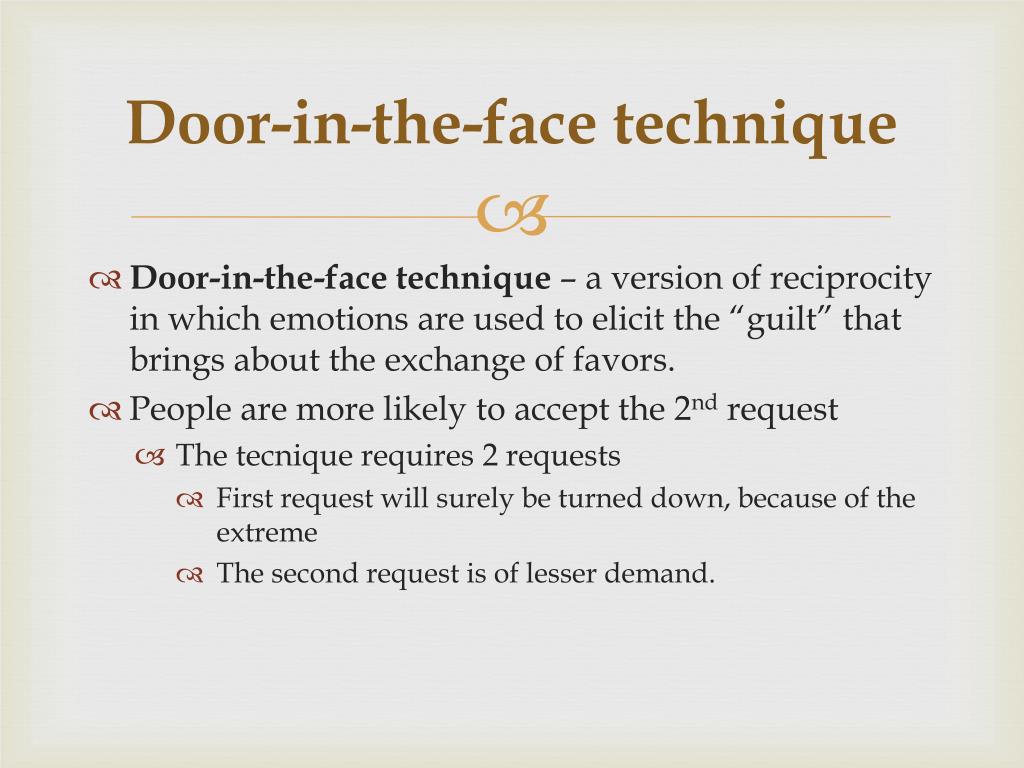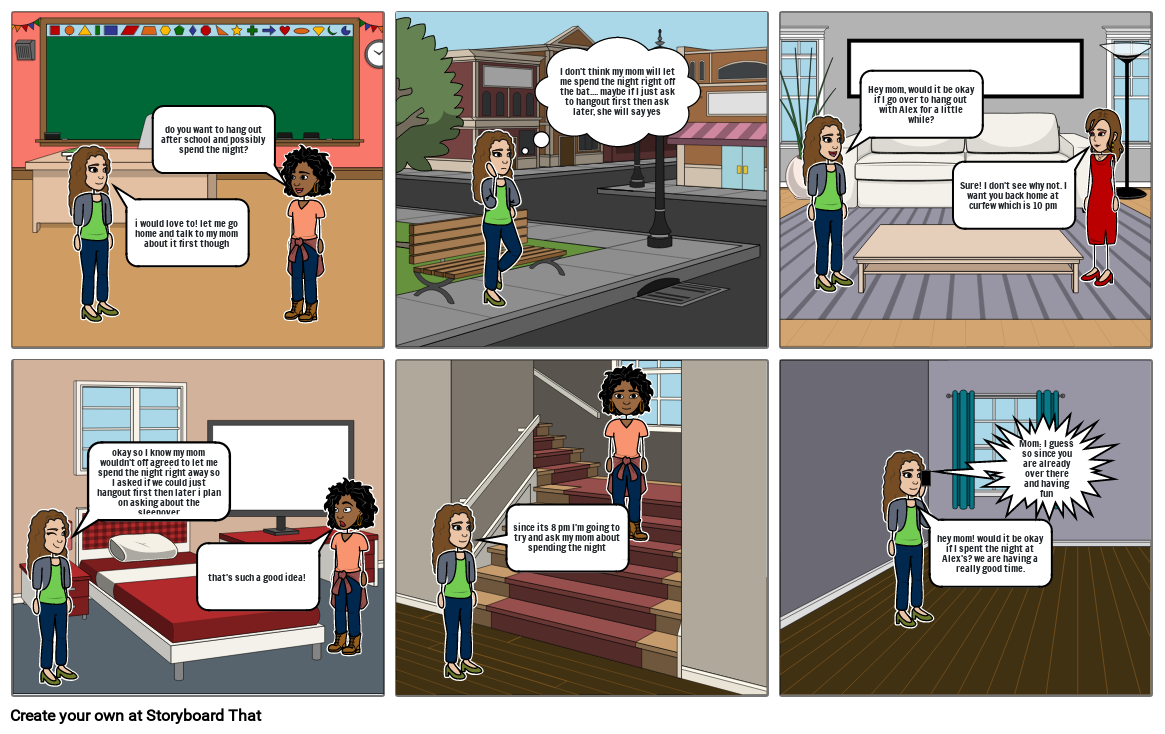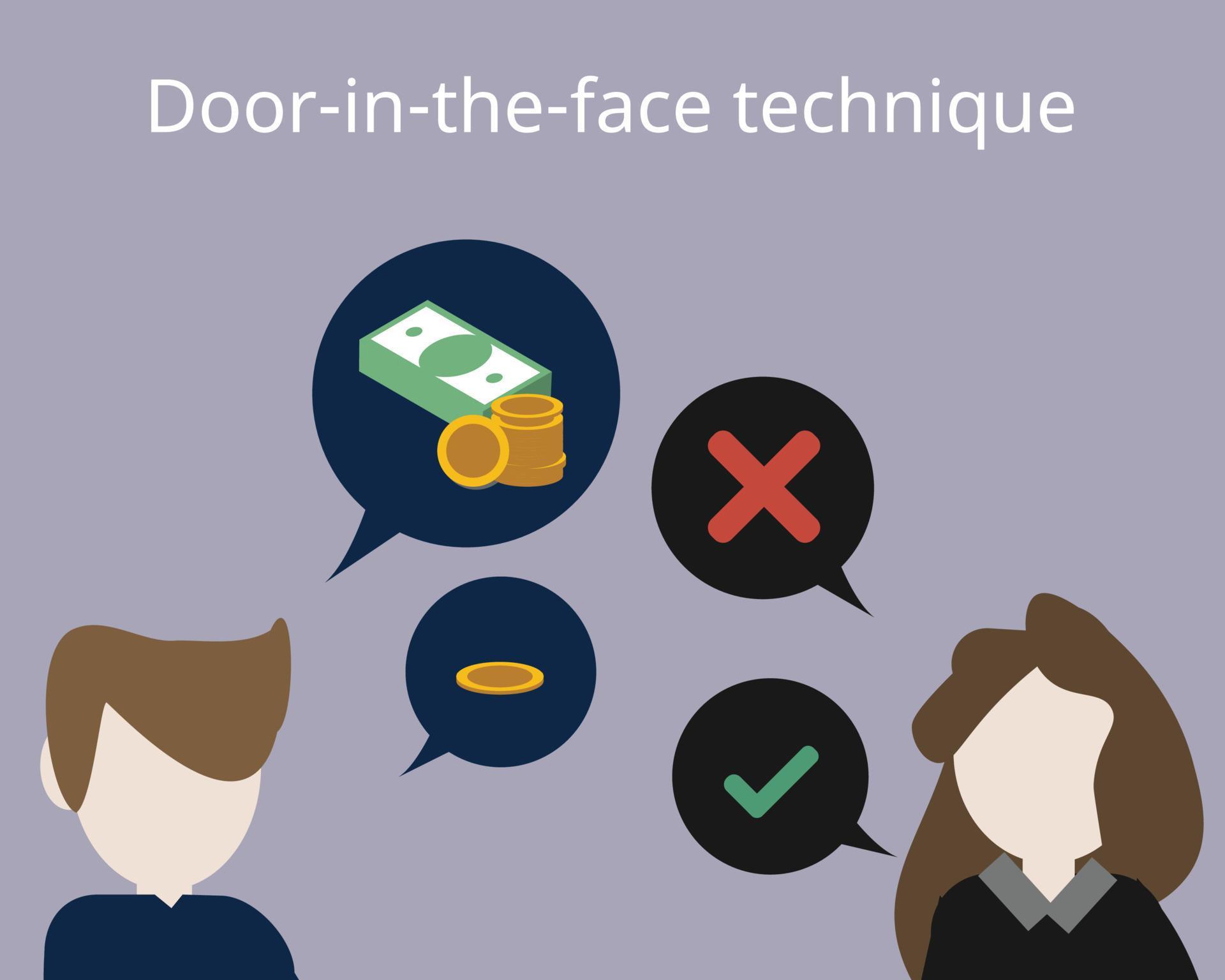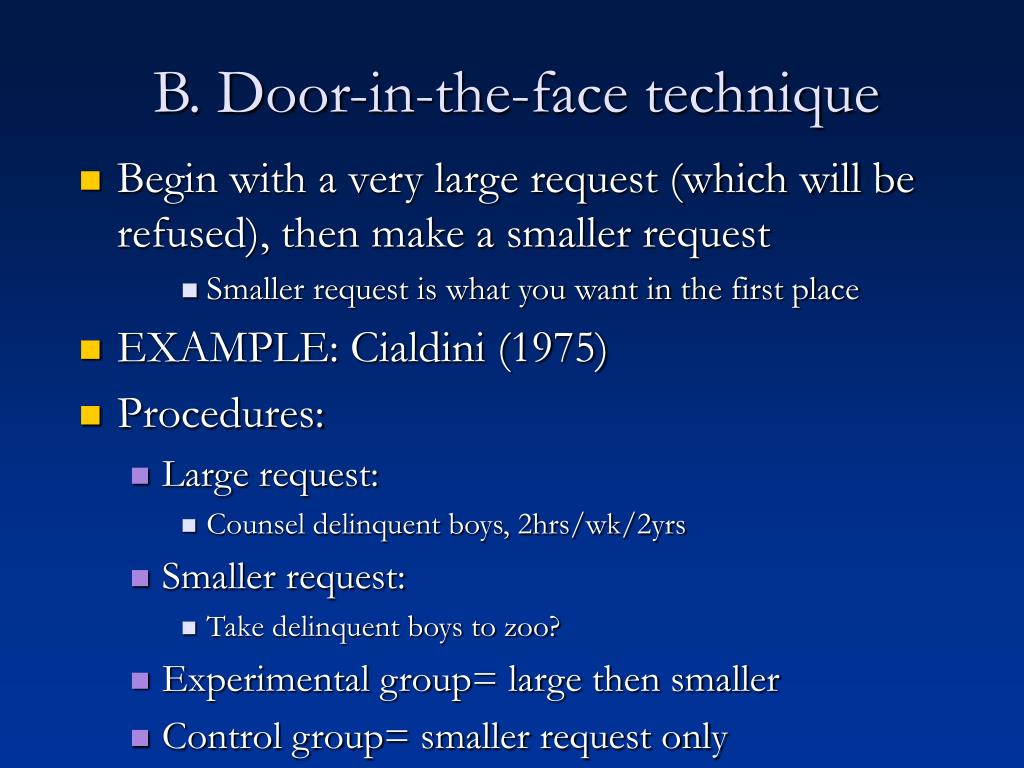
The DOOR in the FACE Technique When a Big Ask Leads to a Smaller One YouTube
APA Dictionary of Psychology door-in-the-face technique Updated on 04/19/2018 a two-step procedure for enhancing compliance in which an extreme initial request is presented immediately before a more moderate target request.

PPT 4.2 Sociocultural level of analysis PowerPoint Presentation, free download ID1623161
April 12, 2022 PM Images/Getty Images Summary. How do leaders persuade people to do things they would rather not do? The author outlines two very different persuasive techniques based on social.

DoorintheFace Technique Theory & Examples Video & Lesson Transcript
Door-in-the-face (DITF) is a sequential request technique in which a source first makes a large request. Upon the receiver's refusal, a smaller (target) request is made. DITF has been found to increase compliance with the target request compared to control conditions where only the target request is made.

Psychology of Influence The Door in the face Technique (Part 2) YouTube
The door-in-the-face technique is a type of sequential request strategy. It is often used to increase compliance rates of a particular request.

Doorintheface technique Storyboard by samanthahuber
To the relief of fundraisers, the door-in-the-face effect was as strong in Germany in 2021 as it was in the US in 1975. Practitioners of the science of are familiar with the.

Doorintheface technique in social psychology 7386915 Vector Art at Vecteezy
The door-in-the-face technique is a persuasive strategy that involves making a large, unreasonable request first, followed by a smaller, more acceptable one. The idea is that the contrast between.

What is Door in the face technique? Marketing91
The door-in-the-face technique is a compliance method commonly studied in social psychology. [1] [2] The persuader attempts to convince the respondent to comply by making a large request that the respondent will most likely turn down, much like a metaphorical slamming of a door in the persuader's face.

Doorintheface Technique YouTube
The door-in-the-face technique is a compliance method whereby the persuader attempts to convince the respondent to comply by making a large request that the respondent will most likely turn down. This technique achieves compliance as refusing a large request increases the likelihood of agreeing to a second, smaller request.

Door In The Face Technique Example slidesharedocs
The door-in-the-face technique does have its limits. If the first request seems unreasonably large, then the technique can backfire. However, as the results of Cialdini and colleagues' experiment show, requests can get pretty big before they seem unreasonable. (Two years of volunteer work with juvenile delinquents is a pretty big request.)

PPT Chapter 15 PowerPoint Presentation, free download ID269814
The Door-in-the-Face Technique (DITF) is a psychological tactic through which one person may be able to secure another person's agreement to take on a significant responsibility. This is achieved.

Door In The Face Technique Psychology slidesharedocs
Search for: 'door-in-the-face technique' in Oxford Reference ». A technique for eliciting compliance by making a very large initial request, which the recipient is sure to turn down, followed by a smaller request. It was introduced in 1975 by the US social psychologist Robert B (eno) Cialdini (born 1945) and several colleagues who performed a.

What is Door in the face technique? Marketing91
The door-in-the-face technique is another sequential request method but operates in reverse. It involves making an initial, unreasonable request that the respondent is likely to refuse outright. The intended request is subsequently made. This method of persuasion is sometimes used in sales negotiations. For example, a car salesman may offer to.

Door In The Face Technique Psychology Definition DEFINITIONVD
Does the Door-in-the-Face Technique Really Work? Researchers in Germany attempted to replicate a classic finding in psychology. Posted July 29, 2021 | Reviewed by Vanessa Lancaster Key points.

The Door in the Face Technique in Social Psychology social psychology education facts YouTube
The door-in-the-face technique (henceforth referred to as DITF) is a technique that involves a set pattern―first you get a no and then you get a yes. This is how it works:

An Explanation of the Doorintheface Technique With Examples Psychology facts, Face, Techniques
The Door-In-The-Face (DITF) technique is a persuasion tactic that involves initially making a very large request that is expected to be refused, followed by a much smaller request. The smaller request is what the requester actually hopes to have granted. The curious name of this technique gives away a hint of its essence.

Psychology of Influence The Door in the face Technique (Part 3) YouTube
The door-in-the-face technique is a compliance strategy in which a person makes a large request, knowing they will get the "door slammed in their face." This is meant to make the next request - the actual request - seem small and reasonable in comparison. How It Works